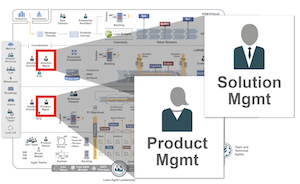在一篇 Terry & Ruddy 對話紀錄中,看到一系列有趣的 LeSS vs. SAFe 討論:
「SAFe 是敏捷跟辦公室政治作出了完美的妥協(應該吧?),所以大家比較 Buy-in 吧。」
「可是 LeSS 乾淨啊,所有會 Scrum 的人讀到 LeSS 都會喜歡啊。」
正好這陣子也在思考這議題,便忍不住狗尾續貂一下。我只從「控制權」角度補充一則觀察。
LeSS
LeSS 直接就在名字表明它的「乾淨」立場,它就是崇尚 “less is more”、“more with less” 哲學的:
LeSS can be viewed as a scaling framework for product development, but can also be viewed as a descaling framework for organizations.
— LeSS / Principles / More with LeSS
崇尚 less 結構,也崇尚 less 控制與監管。LeSS 主張「支持,而非控制」:
The managers’ frame of mind must be support, not control.
Management support from the person(s) who has the organizational authority to make structural changes in your group—usually the head of your product group. This support must be… supporting.
True volunteering is a powerful way of engaging peoples’ minds and hearts. It’s underused, probably due to the feeling of loss of control by managers. But for people in teams it feels empowering.
— LeSS / Adoption / Three Principles
這些「支持,而非控制」的傾向,可直接上溯至敏捷思維的源頭——2001 年揭櫫的敏捷根本原則「自組織團隊」:
The best architectures, requirements, and designs emerge from self-organizing teams. 最佳的架構、需求與設計皆來自於能自我組織的團隊。
所以前面那則對話紀錄評論道「可是 LeSS 乾淨啊」。
SAFe
從這角度來看,SAFe 的「自組織團隊」程度就比較偏低了。
在 SAFe 的 value stream coordination 體系之下,有結構化的敏捷發布火車 (agile release train; ART),有與之搭配的一系列結構化機制;以及⋯⋯專屬角色。
儘管 SAFe 第九原則是 “decentralize decision-making”,但是,從這些專屬機制與角色的配置來看,監管與控制的程度,SAFe 顯然較對傳統組織的胃口:
沒有明言的事
沒有明講的,不代表就不會存在。
Scrum 規模一但擴大,就必定會需要某種程度的協調與對齊。SAFe 和 LeSS 都不否認這些事情的存在,差別在因應的態度、處理的方式。
SAFe 認為,要主動定義這些控制機制:新角色、新決策小組、新節奏。
LeSS 認為,more with less,不須大動干戈引進新角色、新決策小組、新節奏。既有的 Scrum 三角色直接沿用,只要原班人馬再組成 product owner team 即可(頂多再有個 head of product group 做為組織結構上的管理者)。
對於「控制權」不同的態度,決定了不同的導入方式。
SAFe 和 LeSS 孰優孰劣,我沒有資格論斷。至少你可以從「控制權」角度,重新思考本文開頭的提問:
以及,換作是你,會做什麼選擇。
以及,你的選擇,還需要哪些配套措施(文章開頭引述的對話紀錄中,已經有提示了)。
